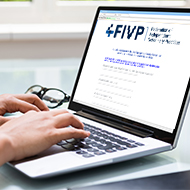The virus has killed millions of birds worldwide since 2021.
A new study has suggested that ‘food theft’, also known as kleptoparasitism, among seabirds could be spreading the deadly avian influenza virus.
Kleptoparasitism occurs when some seabird species, such as frigatebirds and skuas, force another bird to regurgitate their prey and then steal it.
The study, led by scientists from UNSW Sydney’s Centre for Ecosystem Science, saw researchers analysing the distribution, behaviour and movements of frigatebirds and skuas. This was referenced with a global database of them contracting the virus.
The team also examined information about which species of bird that frigatebirds and skuas targeted with kleptoparasitism.
Although the H5N1 virus first emerged in 1996, the most recent strain has proved to be highly virulent. Previously restricted to Eurasia and Africa, it spread to North America in 2021 and South America in 2022. Earlier this year, the virus reached Antarctica.
It has since been declared as panzootic – a pandemic among animals.
This study has now suggested that kleptoparasitism could be playing an important role in the spread of the H5N1 virus.
When a kleptoparasitic bird forces another bird to regurgitate its prey, the food is frequently coated in the other bird’s saliva. If that bird is infected, the regurgitated food will be coated in saliva with a high viral load.
This could infect the kleptoparasitic bird, which could go on to infect others. Researchers say that this mode of transmission will not only spread the H5N1 virus to new populations, but also transmit it across long distances during migration.
This discovery could be key in future disease management.
Although the disease has not yet reached Australia, researchers believe it is inevitable. However, understanding how it is spreading could support early detection of the disease.
This data will contribute to a co-ordinated management approach of avian influenza, including the National Avian Influenza Wild Bird Surveillance Program. This will prepare the country for the spread of the disease, particularly in vulnerable subantarctic islands.
Simon Gorta, a PhD student at UNSW, said: "Birds globally are already under greater threat than ever before -- it is critical the risk posed by bird flu is properly researched and managed,
"We have identified that migratory kleptoparasites, alongside predatory and scavenging species, could be some of the first species to become infected when H5N1 reaches Australia."
The full study can be found in the journal Conservation Letters.
Image © Shutterstock



 FIVP has shared a survey, inviting those working in independent practice to share their views on the CMA's proposed remedies.
FIVP has shared a survey, inviting those working in independent practice to share their views on the CMA's proposed remedies.